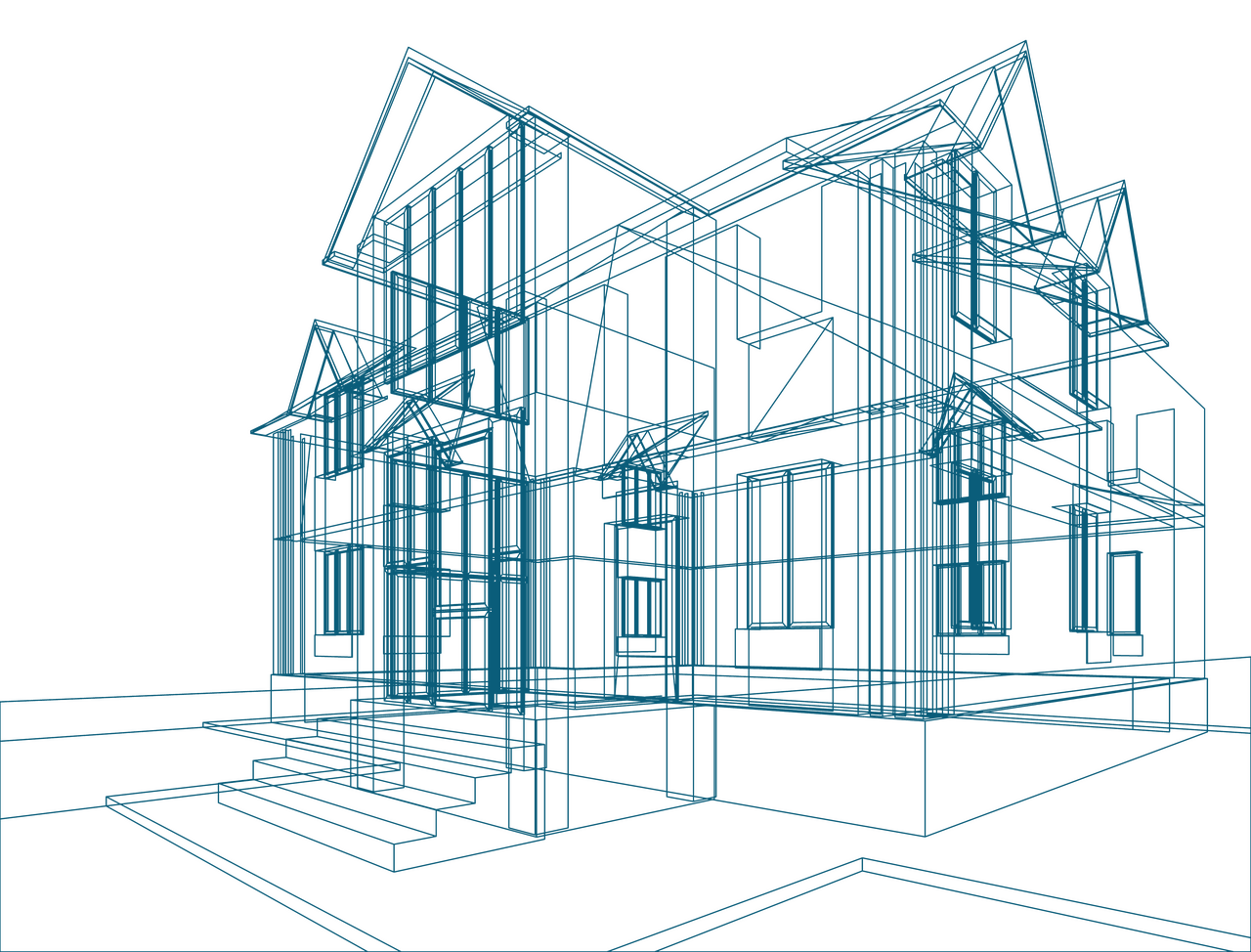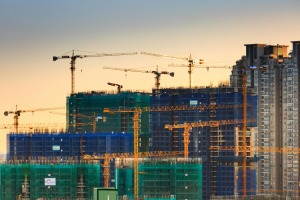


Market report
Smart Homes in Construction industry
Stay updated with the European Architectural Barometer report from USP Research for insights into the latest trends and developments in the architectural industry. Access valuable market reports and data.
Blogs I published 23 August 2024 I Dirk Hoogenboom
How Smart Cities Are Shaking Up Construction
It started out with phones, but it seems like nowadays everything – from wearable tech and homes to retail and agriculture – is getting a smart makeover. So, it’s no wonder that city life is experiencing the same shift, with planners and developers transforming how we design, build and maintain urban spaces.
Smart cities are popping up around the globe, redefining the way residents live, work and interact with their surroundings. They’re designed to be more efficient, sustainable and, most of all, livable by addressing the challenges of growing urban populations. But creating tech-savvy metropolises means more than clever gadgets and high-speed internet; it’s a floor to ceiling shake-up in construction practices, so let’s take a closer look at what it really means and takes for cities to go smart.
What Are Smart Cities?
Smart cities are a complex ecosystem; an intersection of urban planning and tech that manages different aspects of everyday life, resulting in a more connected, sustainable and resilient urban environment. Think IoT, Big Data, AI and blockchain working together to meet the practical needs of residents. While there’s no universal criteria to deem a city smart, on a day-to-day level, this could translate to traffic lights syncing up in real-time to optimize traffic flow, faster and more reliable communication systems that ensure connectivity for all, intuitive streetlights that conserve energy, systems monitoring weather and pollution conditions, increased public safety, innovative waste management or practices that allow for active citizen participation to further developments. So with smart city projects, we’re really talking about an upgrade to the overall quality of life. In a nutshell, the future of urban livability – today.


The Evolution of Urban Development
Historically, cities were primarily focused on providing buildings and residential space to accommodate a growing population, with the focus quickly shifting to infrastructure – roads, transportation systems, utilities… – to support the needs of all citizens. However, in recent years, there’s been a significant shift in the way we think about urban environments, and we’re now looking beyond infrastructure to consider a much broader range of factors (like sustainability, economic development, quality of life or social equity). What this means is that smart cities are a natural next step in this evolution, a way of keeping up with the times and appropriately responding to the way we live today, helping us function more efficiently and sustainably.
Smart Cities and the Construction Industry
Construction is about more than bricks and mortar; it’s always been about creating spaces that shape our lives, foster community and provide a sense of belonging. Smart cities are a natural extension of this ideal. By collecting and analyzing data, experts can identify areas for improvement and implement targeted solutions, so the industry is uniquely positioned to help make a sustainable and equitable future a reality. Here’s how.
The Impact of Smart Cities on Construction
The rise of smart cities is revolutionizing the construction industry in ways that were unimaginable just a few decades ago. As cities become smarter, the construction industry needs to come to terms with the turn of the tides; this means buildings and infrastructure being integrated with advanced technologies. Think eco-friendly practices, streamlined construction processes and project timelines or enhanced worker safety through wearable devices and drones. And that’s just the start.
Innovations in Construction Technology
Construction leaders will have to embrace new technologies and tools; from information and communication technologies, to virtual design and construction (VDC) or building information modeling systems (BIM). With innovations in robotics, automation, materials and construction methods, many industry advancements are well off in enabling construction of smarter and faster buildings.


Key Technologies Driving Smart City Construction
Construction is a dynamic industry that clearly needs to keep up with changing trends. To achieve this vision, we need a lowdown. While we went over the basics driving smart city construction above, now it’s time to talk specifics; what’s what in revamping your approach.
IoT in Construction
A cornerstone of smart city development, The Internet of Things refers to a network of connected devices – from thermostats to security cameras – that communicate and coordinate each other through central systems. In construction, these devices can cover various aspects of a project (for example, smart sensors in concrete to monitor curing, on-site tracking of equipment or materials, optimizing workflow or supervising vital signs to enhance worker safety).
Artificial Intelligence and Machine Learning
By analyzing vast amounts of data, these technologies can predict project timelines, generate design alternatives, optimize schedules, predict construction defects, improve quality control and automate repetitive tasks. By leveraging AI and ML, construction companies can make more informed decisions, improve project outcomes and enhance the overall efficiency of their operations.
Building Information Modeling (BIM)
BIM is becoming an essential tool in the construction of smart cities, as it allows for greater collaboration and efficiency throughout the project lifecycle. Everyone involved in a build – from architects and engineers to construction workers and facility managers – work from the same set of data, ensuring everyone is up-to-date with all relevant information, all in real-time. BIM also allows for better planning and visualization, helping identify potential problems early on and ensuring the project is completed on time and within budget.
Sustainable Construction Practices
Essential for creating environmentally friendly cities, sustainability in smart construction is paramount. We’ve gone over the details elsewhere, but here’s the breakdown: by incorporating sustainable materials, energy-efficient systems and green infrastructure, construction professionals can significantly reduce the environmental impact of their projects.
Challenges in Building Smart Cities
All this doesn’t mean smart cities are a walk in the park. The idea of living in a seamlessly optimized city is immensely appealing, but bringing it to life is a delicate process, filled with challenges we’ve yet to overcome. Behind the scenes, there’s a whole lot of careful planning, breakthroughs and investment going on. Coordinating transportation, housing, public services and infrastructure is no small feat on its own. Add tech integration to the mix – suddenly, there’s far more issues to address in the promise of revolutionizing our cities. So let’s go over the most pressing hurdles the industry faces.
Integration of New Technologies
Smart cities rely on a wide range of cutting-edge tech, all of which needs to work together flawlessly in order to create a cohesive urban environment. This, however, is easier said than done – the process of integration can be incredibly demanding for a number of reasons.
Cost and Time
Existing infrastructure needs to be either retrofitted or replaced entirely, both of which is time-consuming and expensive, especially when upgrading large-scale cities.
Coordination and Techspertise
Different systems syncing up and working together at such a high-performing level requires coordination and technical expertise that aren’t always easy to achieve. A potential skill gap, along with interoperability and compatibility are key concerns.
Cybersecurity
Interconnected devices and advanced systems linked to a single online center essentially come down to vast amounts of data. With a massive, yet delicate network of linked information, smart cities are vulnerable to potentially devastating attacks from various entry points, which can ripple out (from compromised data to disrupted essential services to dangers to public safety). This makes protecting the city’s digital infrastructure an absolute priority. A proactive approach works best: thinking ahead, constant vigilance and ongoing updates to security protocols.
Cost and Investment Barriers
As is with any evolving technology, a smart city doesn’t come cheap. The upfront investments needed in technology, infrastructure and human resources can be substantial – particularly for cities with limited budgets – and the many benefits may take a while to come to fruition. This seeps into financing challenges, so cities may need to look into public-private partnership models, presuming that bureaucracy and inconsistent regulation don’t discourage smart-initiatives early on.


Conclusion
As we’ve explored, smart tech is pushing the boundaries of what our cities can be. By integrating innovative technologies and adopting sustainable practices, smart cities can address the challenges of urbanization and create a better quality of life for their residents. For all the setbacks, the potential rewards are nothing short of transformative: from improved efficiency and a reduced environmental impact to enhanced public safety and economic growth, they offer a promising path towards a more sustainable and prosperous future.
The cities of tomorrow are shaped by the ideas we explore today. So, stay informed and engaged – discover our other blogs on smart city initiatives, and get involved in making your community a more livable place!

Read more

Fresh Insights Await
Our relevant reports
Delve into the newest findings across various market segments, crafted for a cutting-edge overview. Explore our insightful reports, brimming with up-to-date data, trend analyses, and in-depth examinations, all tailored to provide you with a comprehensive understanding of the current market dynamics.
Construction
Home Improvement
Installation
Special reports












